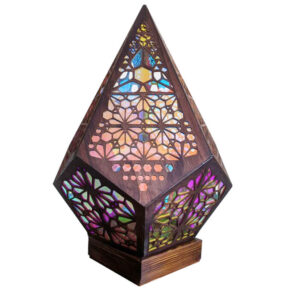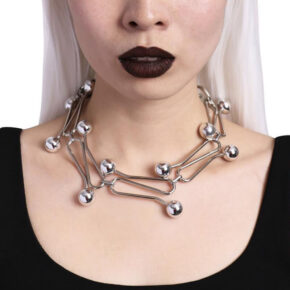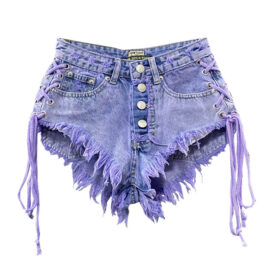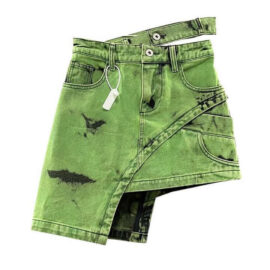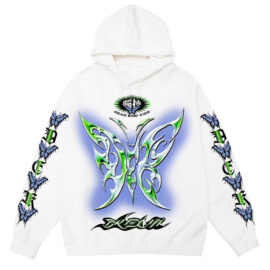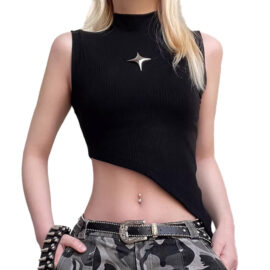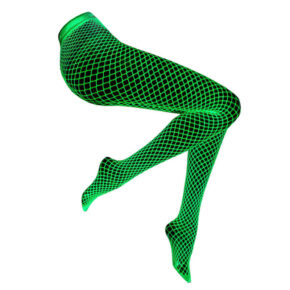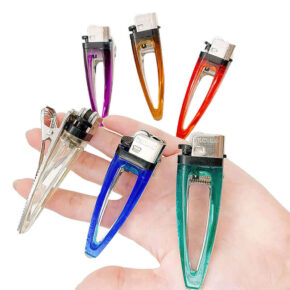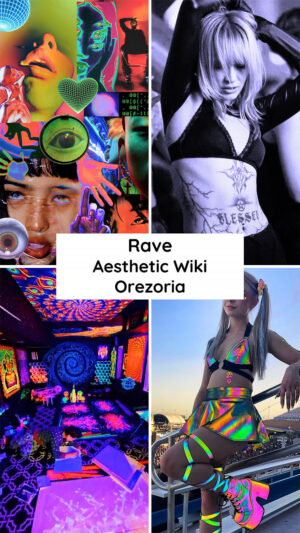
The Rave Aesthetic is a vibrant and eclectic style that emerged from the rave culture and electronic music scene. It encompasses a diverse range of influences and has a significant presence in popular culture.
At its core, the Rave Aesthetic is deeply connected to the energetic and immersive experience of electronic music. It is characterized by bold and intense visuals, often featuring bright neon colors, psychedelic patterns, and a sense of distortion. The use of vibrant visuals seeks to mirror the high-energy and euphoric atmosphere found at rave parties and music festivals.
In addition to its ties to electronic music, the Rave Aesthetic is also closely associated with fashion and art. Raver fashion often embraces futuristic and edgy elements, such as neon spandex, oversized accessories, and cyberpunk-inspired attire. Rave art, on the other hand, incorporates a variety of mediums, ranging from visual art to light installations, that evoke a sense of movement, chaos, and transcendence.
The Rave Aesthetic holds a unique position in popular culture, symbolizing freedom, hedonism, and a sense of community. It represents a subculture that celebrates individuality, self-expression, and the love of music. Whether online or at physical events, the Rave Aesthetic continues to captivate audiences with its vibrant and immersive visuals, making it an iconic and recognizable style in contemporary culture.
Related aesthetics: 90s, Y2K, Alternative, Avant Basic, Cyber Y2K, Cyberpunk, Dark Fashion, Dreamcore, E-Girl, Edgy, Fairy Grunge, Goth, Grunge, Harajuku, Indie, Mermaidcore, Mushroomcore, Psychedelic, Subversive, Techwear, Weirdcore, Witchcore
Full List of Aesthetics
History of the Rave Aesthetic
The history of the Rave Aesthetic traces back to the late 1980s when underground parties emerged as the epicenter of a burgeoning counterculture movement. Originating in the UK, these clandestine gatherings were characterized by their rebellious and euphoric celebration of electronic music. As the scene grew, so did the desire for larger-scale events, eventually culminating in the creation of legal festival experiences that embraced the values and aesthetics of rave culture.
At its core, rave culture is rooted in the belief that music has the power to transcend boundaries and unite people from all walks of life. It is a celebration of freedom, personal expression, and a rejection of societal norms. Rave culture is built on principles of peace, love, acceptance, and tolerance, where participants are encouraged to be themselves and embrace the diversity of the community.
The Rave Aesthetic reflects this countercultural sentiment through its bold and immersive visuals. By utilizing bright neon colors, psychedelic patterns, and a sense of distortion, the aesthetic seeks to capture the energy and euphoria that is synonymous with the rave experience. Whether it’s through fashion, art, or design, the Rave Aesthetic serves as a visual representation of the revolution in music and the spirit of freedom that has defined rave culture for decades.
Key Elements of the Rave Aesthetic
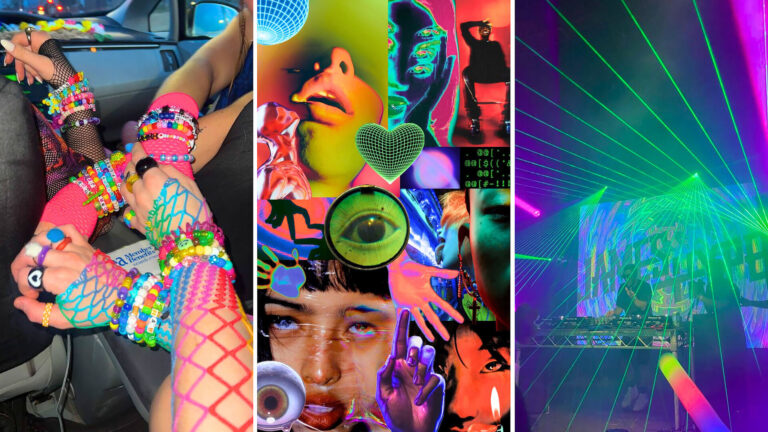
- Electronic Music: The backbone of the rave aesthetic is electronic music. It encompasses genres such as techno, house, and hardcore, creating a pulsating and immersive sonic experience.
- Techno Style: Rave culture is synonymous with techno style. It emphasizes intense beats, hypnotic rhythms, and futuristic sounds, resulting in a high-energy and euphoric atmosphere.
- Rave Fashion: Rave fashion is a major component of the aesthetic. It is characterized by bold and vibrant colors, neon accents, sequins, metallic elements, and futuristic clothing choices. The attire often reflects individuality and embodies the free-spirited nature of the rave scene.
- Signature Aesthetic: The rave aesthetic combines elements of punk, hippie, and futuristic styles to create a unique and recognizable look. It embraces cyberpunk design, neon wavy lines, bold patterns, and vibrant color palettes, all of which contribute to the visually striking nature of the scene.
- Sense of Community: Rave culture is fueled by a strong sense of community. Participants come together to celebrate their shared love for electronic music, creating an inclusive and accepting environment where everyone is encouraged to be themselves and express their individuality.
In summary, the rave aesthetic is an amalgamation of electronic music, techno style, rave fashion, and a sense of community. It is a visual and auditory experience that embraces individuality, rejects societal norms, and celebrates the power of music to unite people from diverse backgrounds.
Rave Aesthetic Fashion and Outfits Guide
Rave Aesthetic Fashion and Outfits Guide: When it comes to the rave aesthetic, fashion and outfits play a significant role in expressing one’s individuality and embracing the vibrant and energetic nature of the scene. Ravers are known for their bold and fearless fashion choices, with an emphasis on neon colors, sequins, metallics, and futuristic designs.
The attire is not only visually striking but also practical, allowing for free movement and comfort during hours of dancing. From crop tops and booty shorts to fishnet stockings and platform shoes, the rave fashion scene offers endless possibilities for creative expression. Accessories such as glow sticks, LED jewelry, and face paints are often used to complete the look, adding an extra touch of sparkle and whimsy.
Whether it’s embracing cyberpunk design, mixing and matching patterns, or donning a head-to-toe neon ensemble, rave fashion allows individuals to fully immerse themselves in the electrifying atmosphere of the rave scene.
Rave Clothing
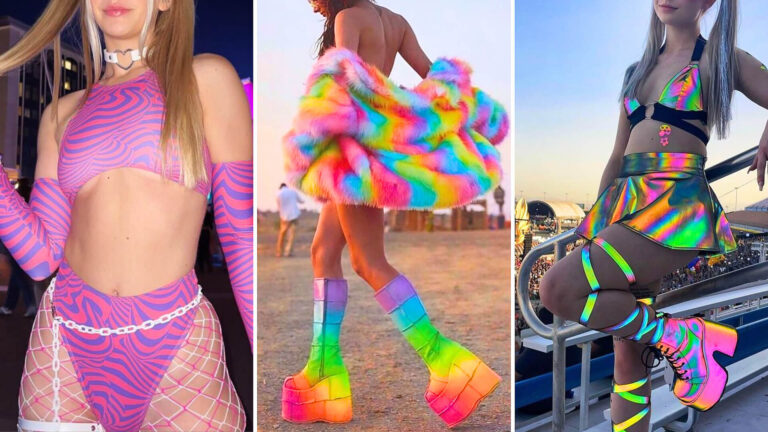
Rave clothing is an essential part of the vibrant and eclectic rave aesthetic. It encompasses various types of clothing and accessories that embrace the energetic and free-spirited nature of electronic music and the rave culture.
Rave outfits are known for their bold and vibrant colors, often featuring psychedelic patterns and futuristic designs. Neon clothing, in particular, is a popular choice, with its eye-catching hues illuminating the dance floor. From neon crop tops and wide-leg pants to hoodies adorned with mesmerizing designs, rave clothing allows individuals to express their unique style and be part of the rave scene.
Accessories play a crucial role in completing the rave look. Glitter, sequins, and LED lights add an extra touch of sparkle and create a captivating visual spectacle. These accessories not only enhance the overall aesthetic but also contribute to the immersive experience of being in a rave environment.
Whether it’s being decked out head-to-toe in rainbow colors or incorporating futuristic elements into their outfits, rave-goers embrace a fashion style that is all about self-expression and embracing the energy of the music. So next time you attend a rave, don’t forget to bring out your boldest and brightest rave clothing to immerse yourself in the pulsating atmosphere.
You can find more Rave clothing and accessories in our Rave Outfits Collection.
Try our new Aesthetic Outfits AI to Try-on Clothes.
Rave Accessories and Jewelry
Rave accessories and jewelry are an essential part of the distinctive rave aesthetic. These accessories not only complement rave outfits but also add an extra level of excitement to the overall experience. Neon jewelry, glow sticks, kandi bracelets, and LED accessories are just a few of the popular options seen in the rave scene.
Neon jewelry brings vibrancy and a futuristic touch to the outfit. From necklaces and bracelets to earrings and rings, these accessories illuminate the dance floor and catch everyone’s attention. They perfectly align with the electric and energetic atmosphere of the rave.
Glow sticks are another staple in the rave scene. These luminescent tubes are often twirled or waved in time with the music to create mesmerizing light effects. They not only provide a visual spectacle but also serve as a means of connection and expression within the rave community.
Kandi bracelets, made from colorful plastic beads, are a symbol of unity among ravers. They are often exchanged or given as tokens of friendship and can be seen worn by ravers of all ages. Each bracelet represents a unique connection and adds to the sense of community within the rave scene.
Additionally, LED accessories, such as LED glasses, gloves, and masks, enhance the visual experience of the rave. These accessories create dazzling light patterns and can be synced to the music, adding an extra layer of excitement and interactivity.
Rave accessories and jewelry are not just fashion statements; they contribute to the vibrant and energetic atmosphere of rave events. Whether it’s the glow of neon jewelry, the captivating movements of glow sticks, the unity represented by kandi bracelets, or the dazzling lights of LED accessories, these elements play a crucial role in creating a memorable and immersive rave experience.
Rave Makeup
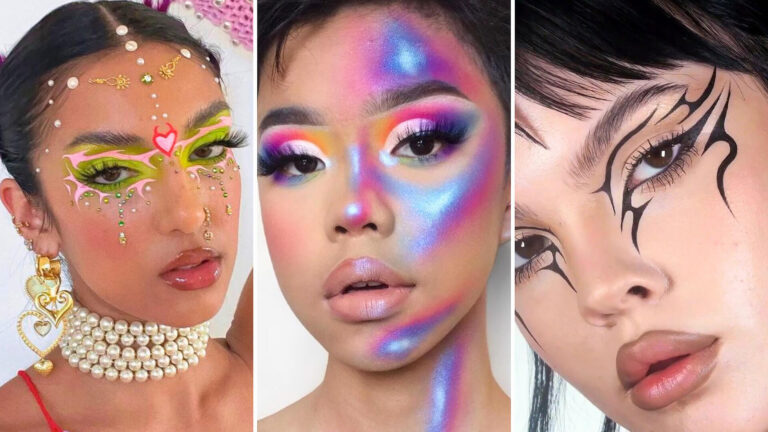
Rave makeup is an essential component of the vibrant and energetic rave aesthetic. It is characterized by bold and vibrant colors, glitter, and graphic liner designs that create a striking and eye-catching look.
One of the key elements of rave makeup is the use of bold and vibrant colors. Ravers often opt for neon shades such as electric blues, hot pinks, and vibrant oranges to create a high-impact look. These vivid hues not only add visual interest but also convey the energy and excitement of the rave scene.
Glitter is another popular feature in rave makeup. Whether applied as an all-over shimmer or used to create intricate designs, glitter adds a touch of sparkle and glamour to the look. It catches the light and creates a dazzling effect that is perfect for the dance floor.
Graphic liner designs are also commonly seen in rave makeup. Ravers experiment with various geometric shapes, intricate patterns, and even neon accents to create bold and unique eyeliner looks. This adds an element of creativity and individuality to the overall appearance.
Rave makeup enhances the overall look and complements the fashion and style of the rave scene. It serves as a form of self-expression and allows ravers to showcase their creativity and personality. It is a visual representation of the vibrant and energetic atmosphere of the rave, adding to the overall sensory experience.
Rave Hairstyles
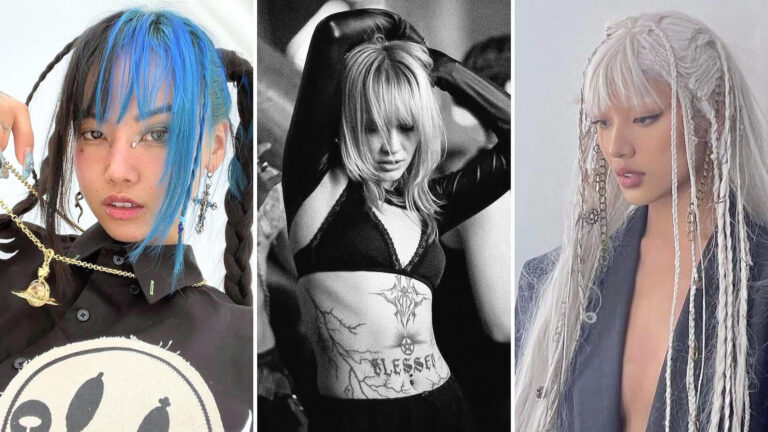
In addition to bold makeup and vibrant outfits, hairstyles play a crucial role in completing the rave aesthetic. Ravers love to experiment with their hair, using it as a canvas for self-expression and creativity.
Colorful wigs are a staple in the rave scene. Ravers often opt for wigs in bright and unconventional hues such as vibrant blues, neon pinks, and electric greens. These wigs allow individuals to transform their look instantly and add a whimsical and fantastical touch to their overall appearance.
Braids, both simple and elaborate, are also popular among rave-goers. Ravers can be seen rocking braided hairstyles inspired by various cultures and styles, such as Dutch braids, fishtail braids, or even intricate festival braids adorned with beads and accessories. Braids not only look visually stunning but also provide practicality during hours of dancing and partying.
Space buns are yet another favorite rave hairstyle. This fun and playful style involves creating two buns on the top of the head, reminiscent of adorable space aliens. Ravers often enhance the cosmic vibe by adding glitter and colorful ribbons to their space buns, making them stand out even more on the dance floor.
To add an extra pop of color, neon hair extensions are also commonly used in rave hairstyles. These vibrant extensions come in various shades and can be clipped or glued into the hair to create a striking and eye-catching effect.
In the rave scene, hairstyles are not just about looking good; they are a form of self-expression and a way to stand out from the crowd. From colorful wigs to creative braids, rave hairstyles are an integral part of the overall aesthetic, adding that extra flair and individuality to the party ambiance.
Rave Nails and Nail Art
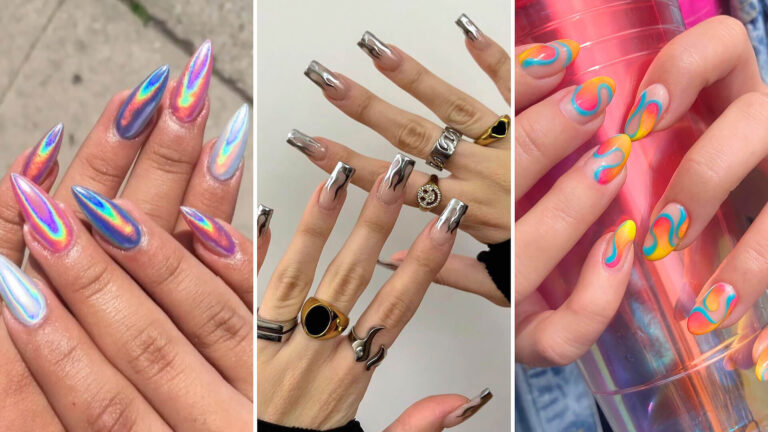
Rave Nails and Nail Art are essential components of the rave aesthetic, adding that finishing touch to create a complete and cohesive rave outfit. Ravers understand that every detail counts when it comes to expressing their unique style and individuality, and their nails are no exception.
When it comes to rave nail art, the bolder and brighter, the better. Neon colors reign supreme, with vibrant pinks, blues, and greens being popular choices. UV-reactive polish is also a must-have for ravers, as it glows under blacklight, creating an electrifying effect on the dance floor.
Holographic effects are another trendy style in rave nail art. These iridescent polishes reflect light in a mesmerizing way, giving off a futuristic and otherworldly vibe. Geometric patterns, such as triangles, squares, and lines, are often incorporated into nail designs, adding a modern and edgy touch.
To take their nail game to the next level, ravers adorn their nails with various accessories. Rhinestones, glitter, and glow-in-the-dark elements are just a few examples of popular nail accessories used to make a statement. These embellishments add an extra dose of sparkle and shine, ensuring that the nails catch every beam of light on the dance floor.
Rave Nails and Nail Art have become an integral part of the rave culture, allowing ravers to express their creativity and individuality in a visually stunning way. So next time you’re at a rave, don’t forget to look down and appreciate the intricate and eye-catching designs on everyone’s fingers.
Tips on How to Create Your Rave Outfit
Creating the perfect rave outfit is all about embracing bold, vibrant, and eye-catching elements that capture the essence of the rave aesthetic. Here are some essential tips to help you create your rave outfit:
- Neon Colors: Neon colors are a staple of rave fashion. Opt for bright shades of pink, green, orange, and blue to stand out in the crowd. These vibrant hues will ensure that you are seen and noticed on the dance floor.
- Psychedelic Patterns: Embrace the trippy and visually stimulating vibes of the rave scene by incorporating psychedelic patterns into your outfit. Think swirling, colorful designs, tie-dye motifs, and geometric prints. These patterns add an element of fun and excitement to your look.
- Glitter: Sparkle and shine with glitter! Whether it’s on your clothes, shoes, or accessories, glitter is a must-have for any rave outfit. Choose glittery tops, sparkly shoes, or even body glitter to add that extra touch of glamour and extravagance.
- Quirky Accessories: Rave outfits are all about expressing your unique personality. Add quirky accessories like LED lights, glow sticks, and reflective sunglasses to elevate your look. These accessories not only enhance your outfit but also provide an interactive and visual element.
Remember, the key to a standout rave outfit is to be bold, bright, and unapologetically yourself. Embrace the neon colors, psychedelic patterns, glitter, and quirky accessories, and let your outfit be a true reflection of the rave aesthetic.
Impact of Rave Aesthetic on Fashion
The impact of the Rave Aesthetic on fashion has been significant, influencing not only subcultures like e-boys and tiktokers but also bringing a sense of authenticity to the fashion scene. The Rave Aesthetic, with its vibrant colors, futuristic designs, and unique silhouettes, has captured the attention of fashion enthusiasts worldwide.
This aesthetic has resonated with various subcultures, particularly e-boys and tiktokers, who have embraced the bold and expressive nature of rave fashion. With its flashy neon colors and psychedelic patterns, the Rave Aesthetic has become a form of self-expression for these groups, allowing them to stand out from the crowd and showcase their individuality.
Moreover, the Rave Aesthetic has inspired numerous high-end fashion brands, including Diesel, Prada, Balenciaga, and others. These brands have incorporated elements of the Rave Aesthetic into their collections, from bright neon colors to avant-garde designs, creating a fusion of streetwear and high fashion. The influence of the Rave Aesthetic has helped bring authenticity and a sense of rebelliousness to the fashion industry, pushing boundaries and challenging traditional norms.
Rave Style in Music and Entertainment
The rave aesthetic has had a profound impact on the music and entertainment industry, particularly in genres like electronic dance music (EDM) and house music. Rave culture emerged in the late 1980s and early 1990s as a subculture centered around underground parties that showcased electronic music. These events quickly gained popularity, bringing together people from different backgrounds to celebrate the power of music and create a unique sense of community.
In the early days, rave culture was characterized by its raw and underground nature. Parties were held in unconventional venues, such as warehouses and abandoned buildings, and featured DJs spinning a combination of techno, house, and breakbeat tracks. This grassroots movement eventually gave rise to legal festival events, where the rave aesthetic became more mainstream and accessible to a wider audience.
Music acts as the catalyst for the rave experience, setting the tone and energy for the event. Electronic dance music, with its pulsating beats, infectious melodies, and immersive soundscapes, creates a euphoric and transcendent atmosphere that brings people together on the dancefloor. The synergy between the music and the crowd creates a sense of unity and collective exhilaration, fostering a strong sense of community that is at the core of the rave culture.
The rave aesthetic has also influenced the visual and artistic elements of music and entertainment. From the colorful and chaotic visuals projected onto screens, to the vibrant and elaborate stage designs, the visual aspects of rave events are carefully crafted to enhance the overall experience. Additionally, fashion trends inspired by the rave aesthetic have emerged, with bold and neon colors, futuristic styles, and flashy accessories becoming staples in the wardrobe of ravers and performers alike.
The Rave Aesthetic in Interior Design
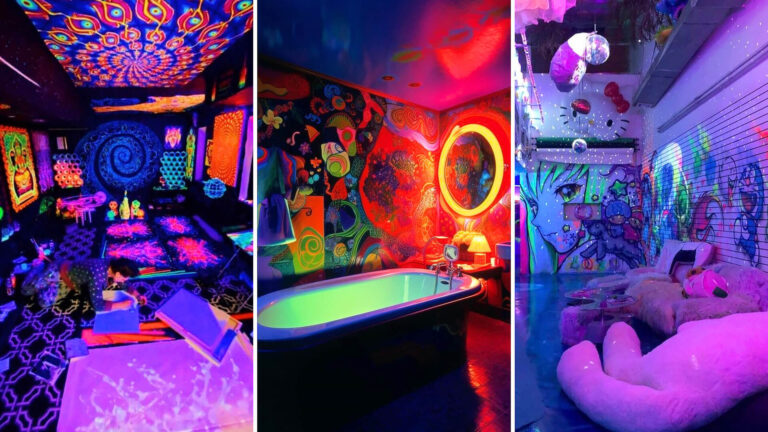
The Rave Aesthetic is not only limited to the music and fashion aspects of rave culture but can also be found in the world of interior design. Rave-inspired spaces, such as nightclubs and music venues, incorporate key elements of the Rave Aesthetic to create an energetic and vibrant atmosphere.
One of the main elements of the Rave Aesthetic in interior design is the use of neon and bright colors. These bold and vibrant hues are often seen in the lighting, décor, and artwork of rave-inspired spaces. Neon lights, glowing signage, and fluorescent paint create a pulsating and dynamic environment that complements the energetic music and atmosphere.
Another important aspect of the Rave Aesthetic in interior design is the incorporation of futuristic elements. Clean lines, sleek surfaces, and futuristic materials such as metallics and glass are often used to create a futuristic and otherworldly vibe. Futuristic furniture designs, such as modular seating and avant-garde fixtures, further contribute to the overall Rave Aesthetic.
By incorporating neon, bright colors, and futuristic design elements, rave-inspired spaces in interior design create an atmosphere that is both visually captivating and energetically stimulating. These elements work together to enhance the overall experience, immersing guests in a world of pulsating music, vibrant visuals, and a sense of unity and collective exhilaration.
Future of the Rave Aesthetic Beyond 2024
The future of the Rave Aesthetic beyond 2024 promises to bring new developments and trends that will further evolve this iconic style. As technology continues to advance at a rapid pace, we can expect to see more interactive and immersive elements incorporated into rave-inspired spaces. Virtual reality and augmented reality experiences could be integrated into rave environments, allowing attendees to explore new dimensions of sound and visuals.
Another trend that may emerge is a fusion of the rave aesthetic with sustainability. As environmental concerns become more prevalent, designers and artists may explore ways to incorporate eco-friendly materials and concepts into rave-inspired spaces. This could include the use of recycled or upcycled materials, sustainable lighting options, and a focus on creating a minimal carbon footprint.
The rave aesthetic has already demonstrated its staying power and ability to adapt over the past 30 years. From its origins in the underground rave scene, it has infiltrated mainstream fashion, art, and popular culture. The bold colors, futuristic designs, and sense of community associated with the rave aesthetic have resonated with countless individuals and inspired numerous creative expressions.
Fashion, in particular, has embraced the rave aesthetic, with designers incorporating neon hues, metallic fabrics, and bold patterns reminiscent of the rave scene. The neo-rave trend has gained momentum in recent years, with a resurgence of rave-inspired designs on fashion runways and in streetwear. This trend is likely to continue in upcoming fashion seasons, as designers tap into the nostalgia and vibrant energy of the rave aesthetic.
The influence of rave aesthetics extends beyond fashion, reaching music, entertainment, and interior design. Rave music continues to evolve, with new genres and subgenres emerging that incorporate elements of the original rave scene. The energetic beats and pulsating rhythms of rave music remain influential, inspiring artists in various genres.
In the entertainment industry, we can expect to see more immersive rave experiences, with virtual reality concerts and interactive performances blurring the lines between reality and digital realms. Interior design will also continue to be influenced by the rave aesthetic, with spaces that embrace the vibrant colors, futuristic elements, and sense of community that define the style.
In conclusion, the rave aesthetic has a bright future beyond 2024. With the integration of new technologies, a focus on sustainability, and the growing popularity of the neo-rave trend, this iconic style will continue to evolve and remain relevant in fashion, art, and popular culture. Its impact on music, entertainment, and interior design will further solidify its place as a lasting and influential aesthetic.
